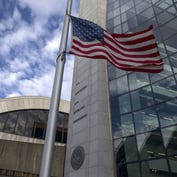Most advisors do not enjoy the compliance regulations involved with running their firm. In fact, in a recent survey of advisors who have assets with my firm, 48% said that compliance rules and regulations were the most difficult things they have to deal with as an RIA. The next biggest complaint was technology, as 14% of advisors said technology issues were the most difficult things they had to deal with. How does your firm use technology to meet your compliance obligations? This is a complicated subject (and please don’t consider me your compliance expert!); however, I do know that properly leveraging technology can make it a little easier to deal with compliance requirements.
Start by documenting everything you do from a compliance review perspective. For newer or less complex advisory firms, you could use Excel as a starting point for recording your compliance activities. For example, you want to make sure that you are documenting everything you do on a monthly, quarterly and annual basis. For larger or more complex firms, your contact management system and your imaging/workflow system would likely be a better solution. Whichever path you choose, it should be very easy to “look back” and confirm the compliance activities completed. And it is very important to stay up to date. An incomplete spreadsheet will clearly not help you during a surprise audit.
Another important area is the various reporting options and solutions that are available to your firm. Many custodians offer the ability to quickly retrieve information on money movement activity, address changes, trade history and execution reports. Furthermore, you also want to ensure you are properly storing and have immediate access to important documents such as account confirmations and statements. When an advisor is going through an audit, frequently the examiner requests the same reports directly from the custodian and compares the results with the data submitted by the advisor. It is critical that you understand how to properly run the reports so that you don’t erroneously exclude any data.
In addition to the compliance reports available through your custodian, you also have a number of options available through the other systems used by your firm. For example, your CRM system should have a wealth of reports that document all your interactions with a client, recommendations implemented and other important activities. Your imaging system should also clearly demonstrate the “life cycle” of client- and firm-related documents so you can show the dates and changes that have occurred. Finally, your portfolio reporting system should offer the ability to easily run reports detailing the amount of fees a client has paid.








 June 30, 2014 at 08:00 PM
June 30, 2014 at 08:00 PM










